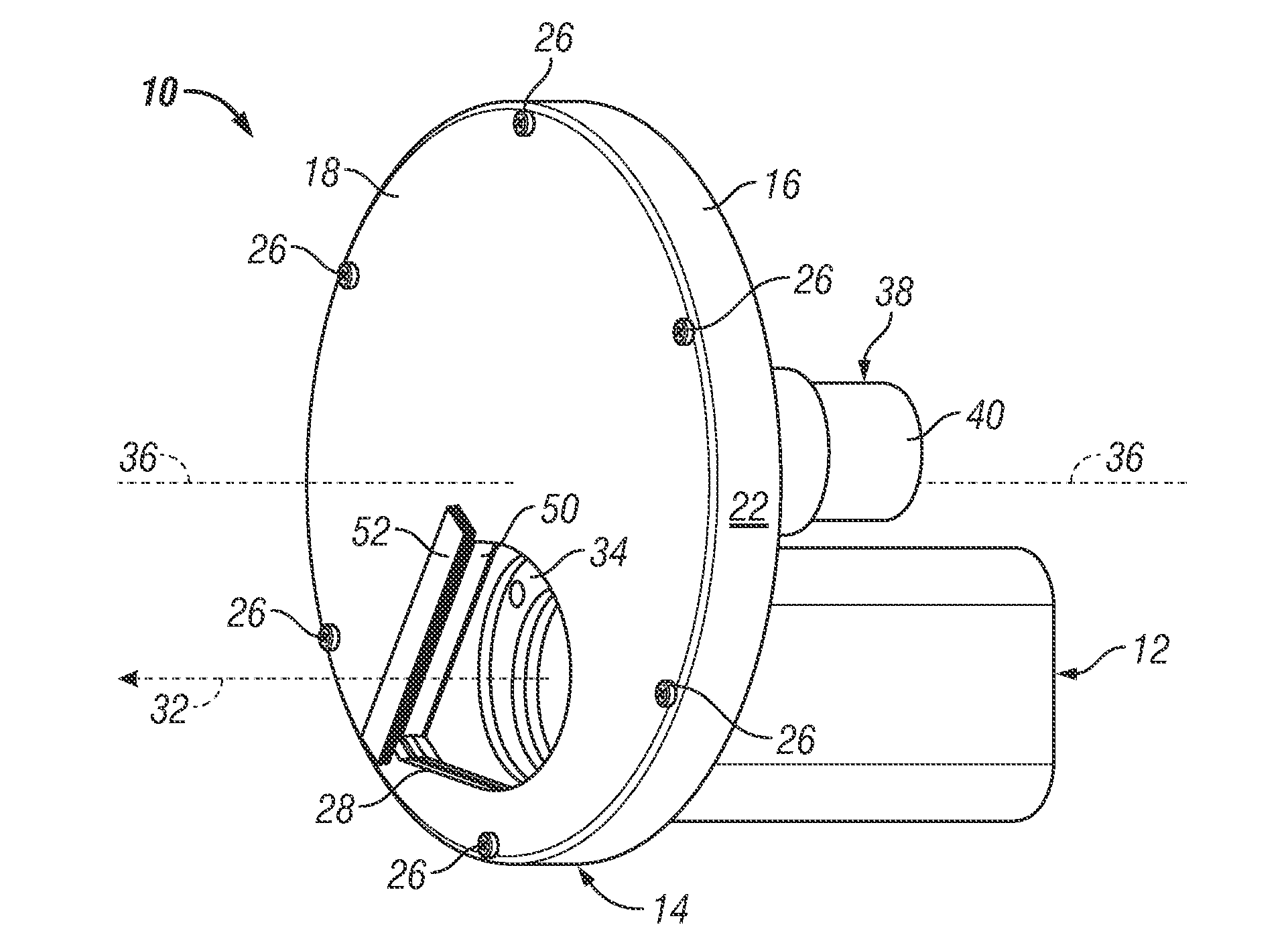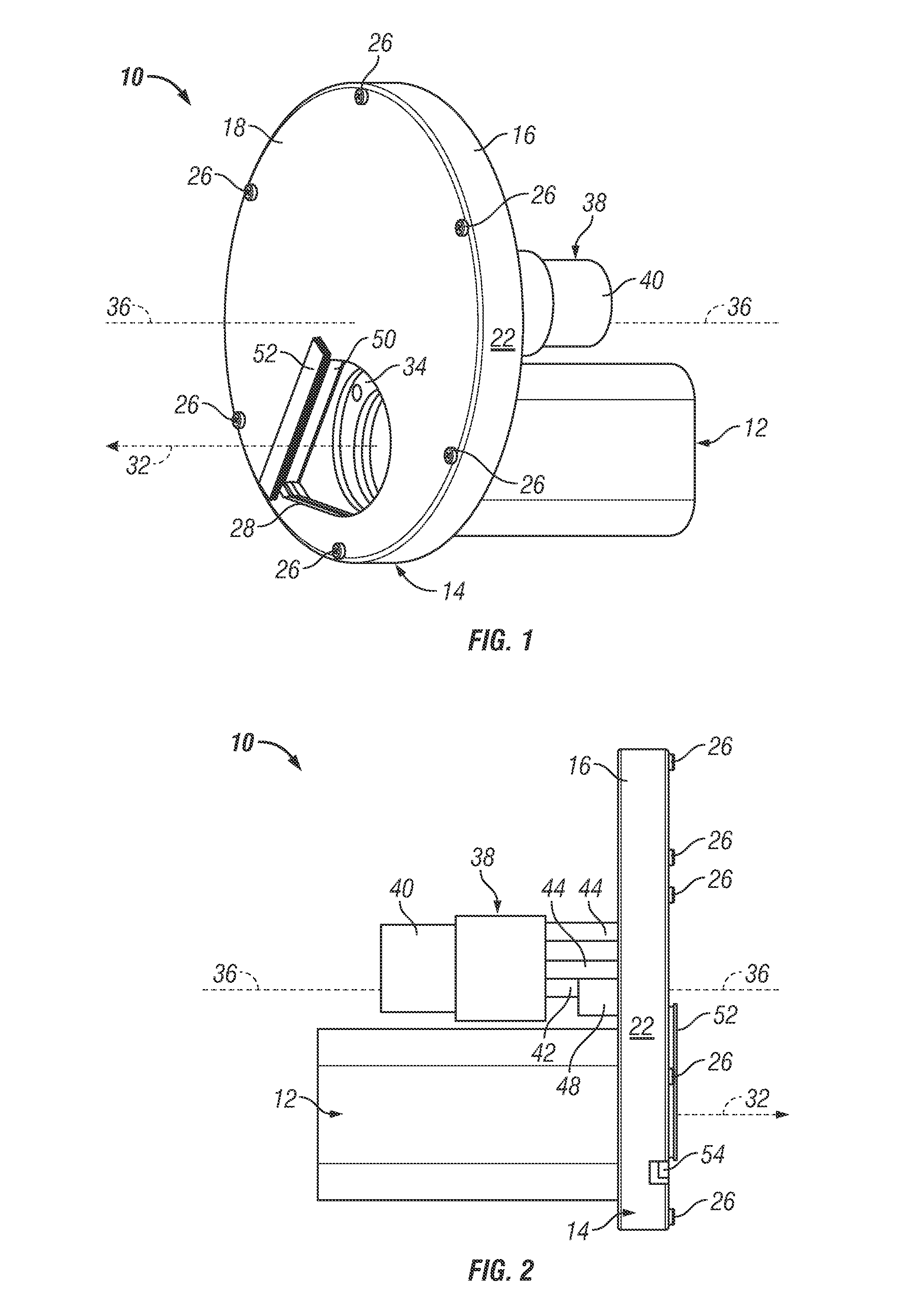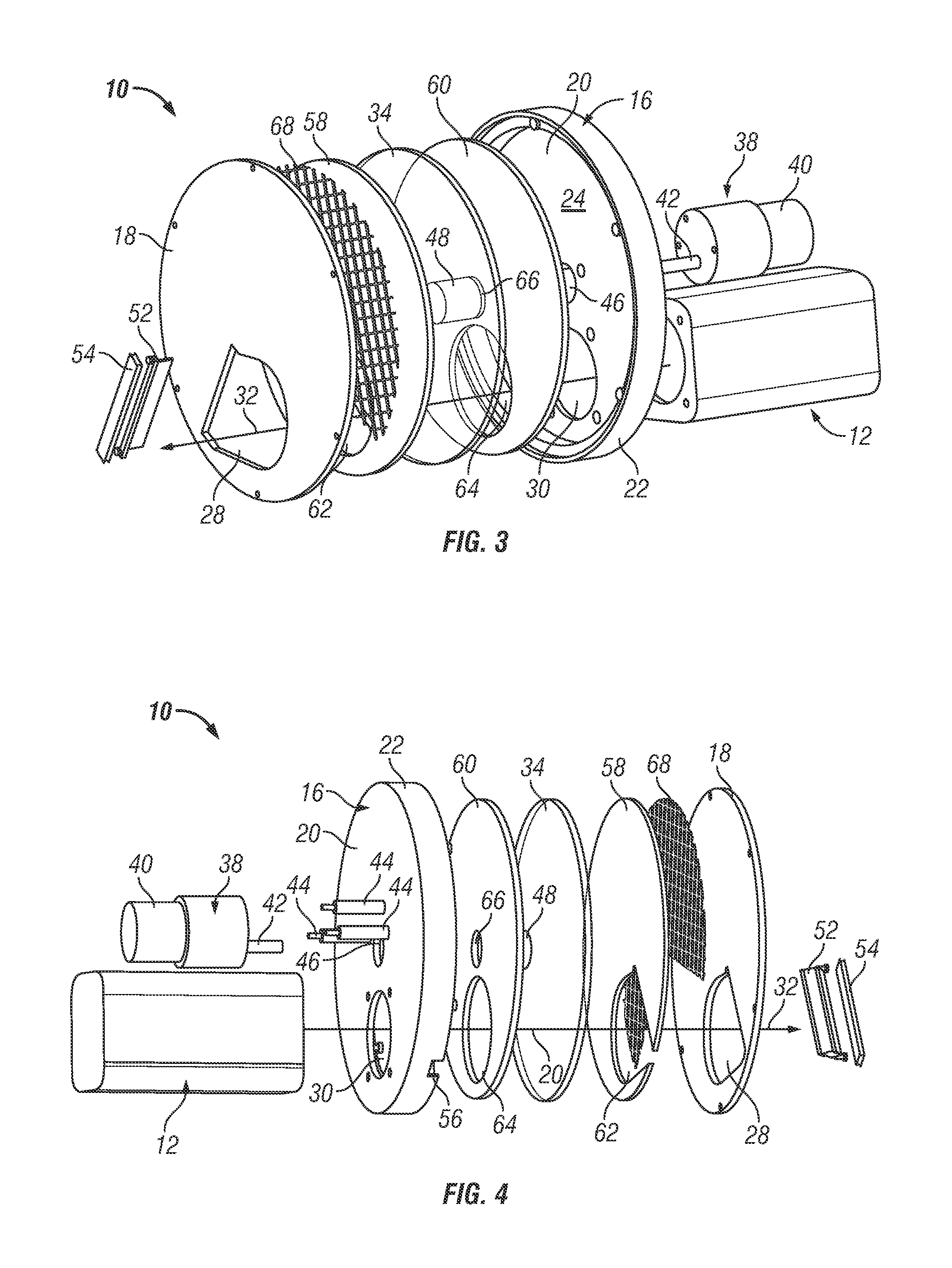Automated camera cleaning system
a camera cleaning and automatic technology, applied in the field of automatic camera cleaning systems, can solve the problems of obstructing the forward-looking field of the camera, affecting the remote operation of affecting the operation of the camera on the high-speed moving target,
- Summary
- Abstract
- Description
- Claims
- Application Information
AI Technical Summary
Benefits of technology
Problems solved by technology
Method used
Image
Examples
Embodiment Construction
[0008]The following Detailed Description is merely exemplary in nature and is not intended to limit the invention or the application and uses of the invention. Furthermore, there is no intention to be bound by any theory presented in the preceding Background or the following Detailed Description. As appearing herein, the term “camera” is utilized in a broad sense to denote any optical sensor that detects radiation within the visible, infra-red, or other band of the electromagnetic spectrum including, but not limited to, daytime and nighttime video cameras, synthetic aperture radar sensors, and infrared (e.g., thermographic) cameras.
[0009]FIGS. 1 and 2 are isometric and side views, respectively, of an automated camera cleaning system 10 in accordance with an exemplary embodiment. As will be explained more fully below, automated camera cleaning system 10 continually removes dust and other debris that accumulates over the lens of a camera without obstructing the camera's field-of-view....
PUM
 Login to View More
Login to View More Abstract
Description
Claims
Application Information
 Login to View More
Login to View More - R&D
- Intellectual Property
- Life Sciences
- Materials
- Tech Scout
- Unparalleled Data Quality
- Higher Quality Content
- 60% Fewer Hallucinations
Browse by: Latest US Patents, China's latest patents, Technical Efficacy Thesaurus, Application Domain, Technology Topic, Popular Technical Reports.
© 2025 PatSnap. All rights reserved.Legal|Privacy policy|Modern Slavery Act Transparency Statement|Sitemap|About US| Contact US: help@patsnap.com



